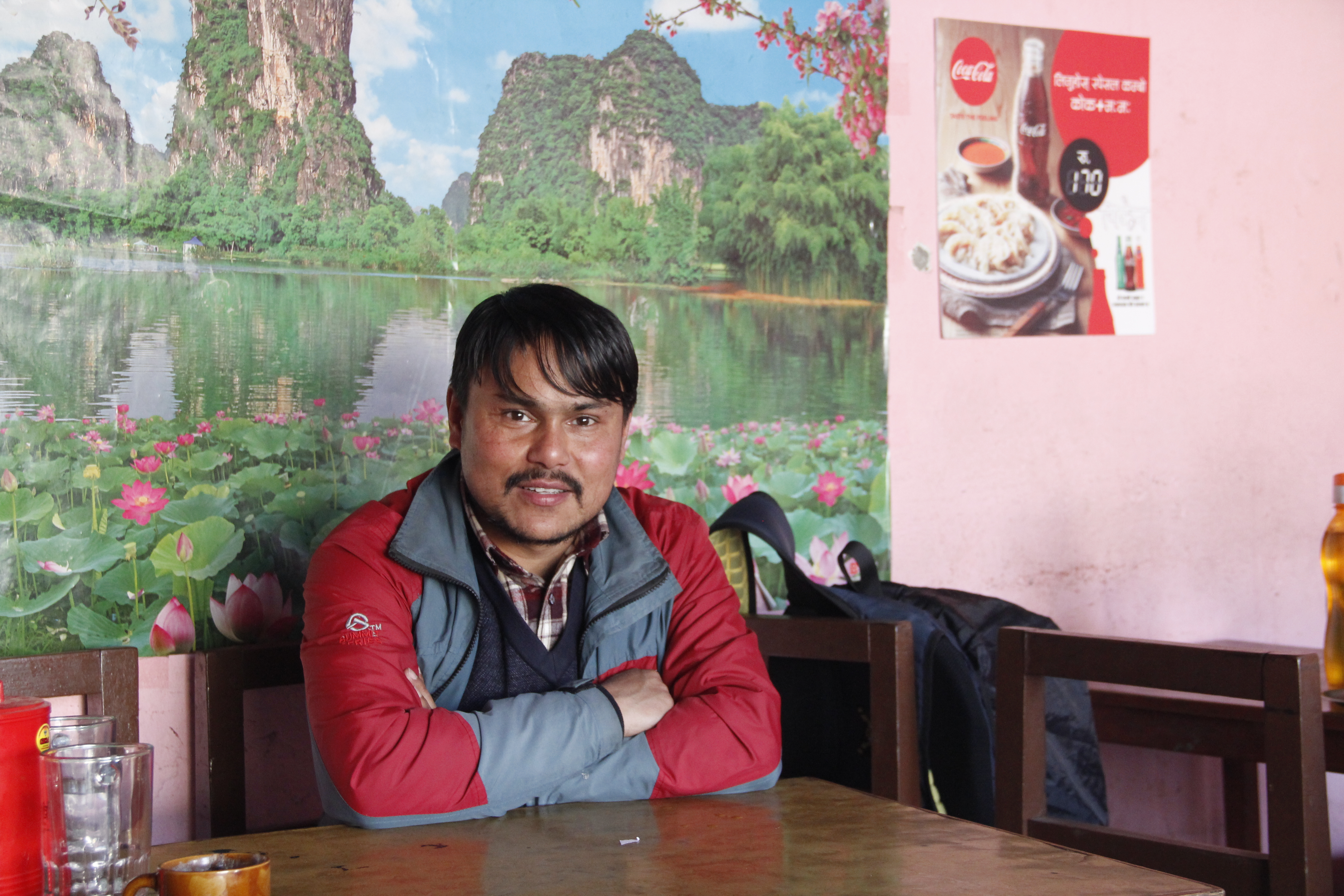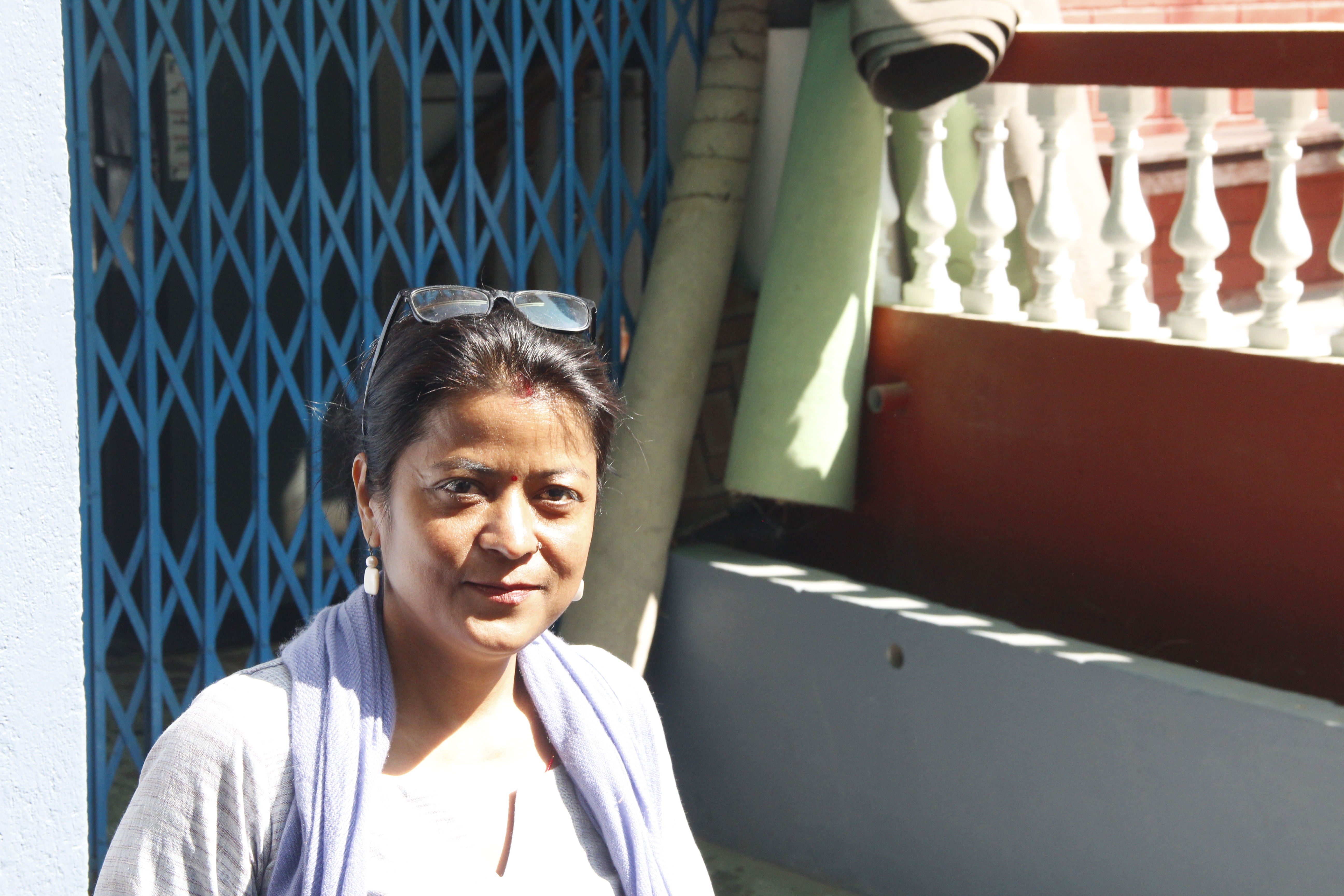Nepali state, organizations remain highly vulnerable to cyberattacks
In September 2020, Nepal Police arrested five Chinese nationals who were trying to withdraw cash with cloned debit cards. The accused had hacked the Nepal Electronic Payment System (NEPS), an interface that allows the transaction of money deposited in a bank by using cards issued by other member banks. Similarly, in March 2020, the food-delivery company Foodmandu had a data breach. A Twitter handle named ‘Mr. Mugger’ revealed the data of its 50,000 customers and disclosed links associated with the data.
Of late even Nepali celebrities have become victims of cyber-attacks. Actor-director Dipashree Niraula is a recent victim. Last month, her Facebook page was hacked and hackers asked her for Rs 10,000 in ransom to let her have it back. (On April 6, the cyber cell of Nepal Police arrested a 14-year-old from Parsa district for the crime.) Another actor Saroj Khanal’s account got hacked at the same time. In this case, the hacker contacted one of Khanal’s close friends, pretending to be Khanal, and tried to get the friend to deposit money into the hacker’s bank account.
These are not isolated incidents. Cyberattacks such as data breaches, ATM hacks and social media hacks have become common owing to the vulnerabilities and weaknesses in Nepal’s cybersecurity capabilities. The ethical hackers, cybersecurity researchers, and IT experts ApEx talked to said Nepal’s cyber-space was riddled with loopholes.
Karna Bahadur Shrestha, a faculty in Computers and IT Department at Aryan School of Engineering and Management, feels the state of cybersecurity in Nepal is abysmal. Most Nepali internet-based digital systems are vulnerable as even renowned organizations and companies do much bother about users’ data privacy; nor do most government agencies.
The main problem is ignorance of potential cyberattacks. There is no vulnerability testing during the development of digital systems. “People are more concerned about operation than security of their systems,” Shrestha says.
The vulnerability of Nepal’s cyberspace makes it an easy target for hackers, explains Ismam Ansari, an IT professional and computer engineer from Mahottari. The vulnerability owes to poor network monitoring, inadequate security against phishing attacks, and weak authentication management, he explains. “Weak cybersecurity means chances are high that someone will hack into your digital system,” Ansari adds.
Proportional risks
Likewise, Nirmal Dahal, Head of Security and co-founder at CryptoGen Nepal, an IT security service, has been in the field for over five years. “The progress in IT brings proportional risks.” Dahal says. “The multiplying opportunities and platforms online have also enhanced the risk of cyber-offenses.”
While almost every organization looks for ways to provide digital services, they are less bothered about making their online systems secure. There are also no strict cyber laws to prevent misuse of data. The few available laws and guidelines do not cover most threats, Dahal explains.
Nepal is gradually becoming aware of the need for cybersecurity. “In the past, only banks used to perform security assessments. But now other corporate and government sectors have also started such assessments,” he says.
Akash Basnet, a certified ethical hacker and computer operator at the Ministry of Law, Justice and Parliamentary Affairs says the main culprits are outdated software, lack of knowledge as well as technical expertise. “Many Nepali websites can be easily penetrated as they have zero protection measures,” he says.
Narey Vai (also known as Narapisach), a 17-year-old security researcher who was arrested earlier this year for leaking data of Vianet users, says the Nepali cyberspace is defenseless. “If you have a mobile phone SIM card or are connected to the internet, your privacy has been exposed,” Narey Vai says. “The financial and government sectors are the most vulnerable.” Annual Vulnerability Assessment and Pen Testing are keys to locating a system’s vulnerabilities, but Nepali companies seldom undertake them, he says.
Binit Ghimire, another web developer and ethical hacker from Chitwan, says the condition of cybersecurity in Nepal is pitiful, with frequent cyber-attacks such as website defacements, ATM hacks, and data breaches. “I think the security has improved significantly in the government’s digital systems but other government websites are still vulnerable,” he adds. Moreover, in recent years, data breaches of private and non-government companies as well as start-ups have surged. Also, Ghimire points out, the level of awareness about cybersecurity is still rudimentary.
Loopholes and losses
Lax cybersecurity hits victims financially by contributing to either direct losses (ATM hacking, unsolicited financial transactions) or indirect losses (loss of trust).
Most cyber-attacks contribute to financial losses, according to Shrestha. One big reason hackers attack a website, app or a digital system is to earn money. “But such attacks can also lead to harassment and sexual abuse,” Shrestha adds.
As we have become more reliant on services that leave digital footprints, the number of cyberattacks has tripled over the last decade, Dahal says. This in turn sullies brand image, and leads to the loss of resources, data, and money. “Financial services have become the most targeted industry,” Dahal says.
Kushal Ghimire, a lecturer in computer applications at Koshi Saint James College, Itahari, suggests the IT sector incorporates skilled human resources on cybersecurity. “The digital systems should also be regularly updated to meet global standards,” he says. Clear and concise laws regarding cybersecurity and their strict implementation would help too.
Awareness is, again, the key, according to Ghimire. It is necessary to make people aware of the technology they use regularly. They must learn about security measures and the dire consequences of failing to take precautions.
For Shrestha, the first line of defense is making security a major concern while developing a digital system. Quality inspections are required for government systems that are more vulnerable. He suggests it is about time schools and colleges included cybersecurity as a course of study.
People, or users, are the weakest links in any network, Dahal adds. You could include every security aspect into your network and yet the smallest of errors could undo all preparations. He says security starts at home. “For example, a simple pep talk at the dinner table on phishing will ensure your parents don’t click suspicious links on social media.”
Basnet agrees that there are loopholes in any digital system. The secret is to find them early. “That’s where ethical hackers come handy. They can find the vulnerabilities and take immediate action,” he says. As most people today use some form of social media, says Dahal, they should be aware of the basic security measures like two-factor authentication.
Binit Ghimire’s suggestions differ to an extent. “At first, every organization with digital presence must carry out frequent internal security audits, and outsource their audits and penetration testing activities to cybersecurity companies,” he says. Ghimire also highlights the need for employees to protect themselves from “human hacking” which involves luring people into divulging sensitive information. Bug bounty programs can help as well as it encourages unethical hackers to turn white in their quest for rewards.
Not all disabilities are equal in Nepal
The rights of persons with disabilities in Nepal are primarily negotiated through the umbrella organization National Federation of the Disabled Nepal (NFDN). The organization works hard to shed light on the rights of persons with disabilities, and the human rights-based law that was passed in 2017 would not exist without it. But not everyone fully benefits from the organization.
There are voices within the movement that advocate an intersectional view of inclusion and human rights. That is, the importance of being aware that a person may experience multiple discriminations at the same time. Persons with disabilities from the indigenous population, persons with intellectual disabilities, or those who live in remote rural areas are just a few examples of groups that experience multiple discriminations. However, the intersectional view of inclusion is currently not much in vogue.
Unfortunately, a movement whose mission is to work for human rights is not immune from traditional values and social structures regarding caste, gender and ethnicity. The leaders of the NFDN are mostly from upper castes and from groups of the most common disabilities— blind, deaf/hard of hearing and physical disabilities.
The 2017 law was a big step in the direction for a more equal Nepal. However, after the law was approved, progress within the disability movement slowed. Changes still happen, but new voices are mostly kept out.
“There is a hesitation to include new groups,” says Krishna Gahatraj, who has been active in the movement for several years. “Dalits and ethnic groups do not have the opportunity to speak up about their special needs within the disability issue.”
Gahatraj also points out that most activists in Nepal's civil society are connected to political parties, which hinders a critical approach to social development. “As most activists are also linked to political parties, they must also follow the agenda of their party and cannot criticize how politics is conducted,” Gahatraj continues.
Disabilities occur regardless of social status, but these hierarchies are still brought into NFDN unintentionally. Which means that there is an uneven distribution of power within the disability movement.
“NFDN seems equal on paper, but in practice it is governed by only a few people,” claims Padam Bahadur Pariyar, a consultant within the disability inclusion sector.
The disability movement is versatile, with great diversity in both the type of disability as well as in class, gender, caste, and ethnicity background among its members. When the main task of NFDN is to fight for the rights of persons with disabilities, it is easily forgotten that those with additional burdens may need to be specifically highlighted.
In the disability movement, the blind, deaf/hard of hearing and groups with physical disabilities have gained an advantage. They are among the most common types of disabilities and thus make up the majority of NFDN's members. They are more organized as these disabilities are relatively easy to detect and their organizations have received international support for a long time. Additionally, compared to persons with intellectual disabilities, they can more easily speak up for themselves.
This means that an internal competition emerges between the representatives of different types of disabilities. Activism is after all about attention, and within an organization the size of NFDN, you must compete for attention and the opportunity to express your needs to focal persons.
Shila Thapa, founder of Down Syndrome Society Nepal, has long tried to argue that the board should be more attentive to the needs of persons with Down.
“I talk to the leaders of NFDN about raising our issues. They are always positive at the time, but nothing happens,” she says.
When I have myself tried to discuss this issue with NFDN leaders, they deny competition between groups. The topic is not a popular one and I get fleeting answers.
Elite capture is common in human rights movements. This means that the already strong groups gain strength from development work, they benefit more from education and can become better at presenting their needs. Divya Gurung, long-time consultant for international organizations, has seen it many times.
“Most often, it is the groups who already have resources, such as money or knowledge, who benefit from development work,” she says. “It is very difficult to reach the most vulnerable.”
This problem is far from unique to the disability sector. It is something that affects all of Nepal, including NFDN.
Continuing to develop the movement allows greater opportunities to gain extended rights and a chance to create an accessible society for all—regardless of where in the country you live or which ethnic group you belong to.
“If change is to happen, words must turn into action, and the attitude towards inclusion must change,” says Ghataraj. “We need to meet and discuss different categories of disability, in order to create an understanding of the other's situation.”
In an environment where politics is fragile and irregular, and where rights are recently achieved, it is perhaps not strange that you protect your own and the little you have attained. However, it is important that new groups are invited to enjoy the benefits. Which would mean that everybody gets a small piece of the cake, instead of a few having a hand full. But it can also mean that everyone gets more in the long run, due to strength in numbers and diversity.
It is a long-term process, where the stronger groups must take the first steps.
The author has an MSc in Global Studies from the University of Gothenburg, Sweden
Goods being smuggled into eastern Nepal from India
Consumer goods including food items are being smuggled into the country from the southeastern checkpoints of Morang district.
A team led by Inspector Kamal Bahadur Adhikari of the Armed Police Force Border Outpost (BOP) Rangeli seized a batch of smuggled goods on the evening of April 2. The team also seized a mini-truck used in smuggling. Chief of the APF, Morang, SP Tirtha Poudel informs that the smuggled goods including sugar, wheat, rice and bran were taken under control from Dhanatti Toll in Rangeli Municipality-5, Amgachhi.
According to Poudel, the goods were recovered while they were being loaded onto a mini-truck en route to Nepal from India. The truck and illegal goods worth some Rs 1.6 million have been handed over to the Biratnagar Customs Office. One Bharat Sah, who runs a grocery shop in Belbari, Morang, is accused of being the mastermind behind the smuggling. Sah, it is learned, has been running the grocery store as a front and smuggling goods from India for a long time.
Sah has been absconding since his illegal imports including the truck were confiscated. According to Poudel, routine search was intensified after the driver of the truck the APF was trying to stop at the Nepal border fled. Poudel also confirms that smugglers have started using new means of transport after the APF increased surveillance at border checkpoints and went on high alert.
Chief of the APF, Province 1, DIG Vanshi Raj Dahal, has mobilized a special team to control illegal trade and boost security in border areas. In Morang, which has a 63.4 km-long open border with India, there are 11 border outposts of APF with the responsibility of maintaining security and controlling smuggling.
Doctor arrested for sexual assault
Police have arrested a doctor working at the Chhinnamasta Hospital in Rajbiraj of Saptari on charges of sexually abusing a patient under the pretext of treatment.
Superintendent of Police Rajendra Prasad Dhamala informed that they arrested Rajan Jaiswal, a pediatrician, on March 26 for sexually abusing the patient, a 25-year-old woman, at the hospital.
“Initially, I thought he accidentally touched me while examining my newborn baby,” the victim reported, “But then he started opening my blouse and touching me inappropriately despite my repeated protests.”
The woman from Khutuna in Madhubani district of Bihar, India, had come to her maternal home in Saptari for delivery of her child. She was admitted to Chhinnamasta Hospital and gave birth to a baby girl on March 24. The newborn was sent to the ICU.
Preliminary police investigation has shown that it is an incident of sexual abuse. The victim has lodged a complaint at the District Police Office. Hospital administrator Rajesh Jha has issued a statement informing that the hospital has immediately suspended Jaiswal.





















